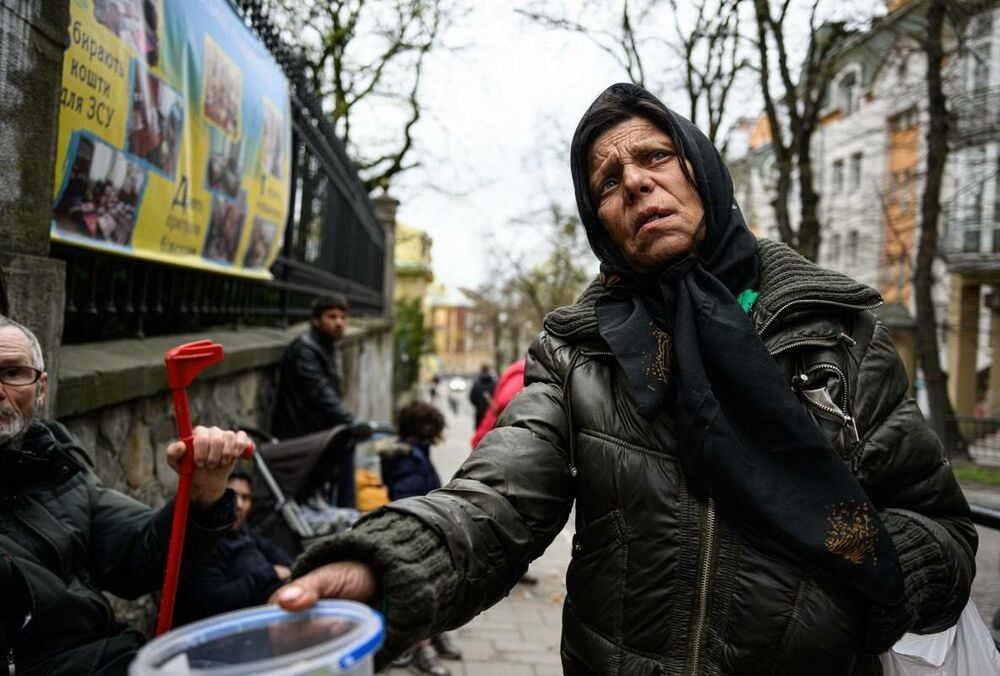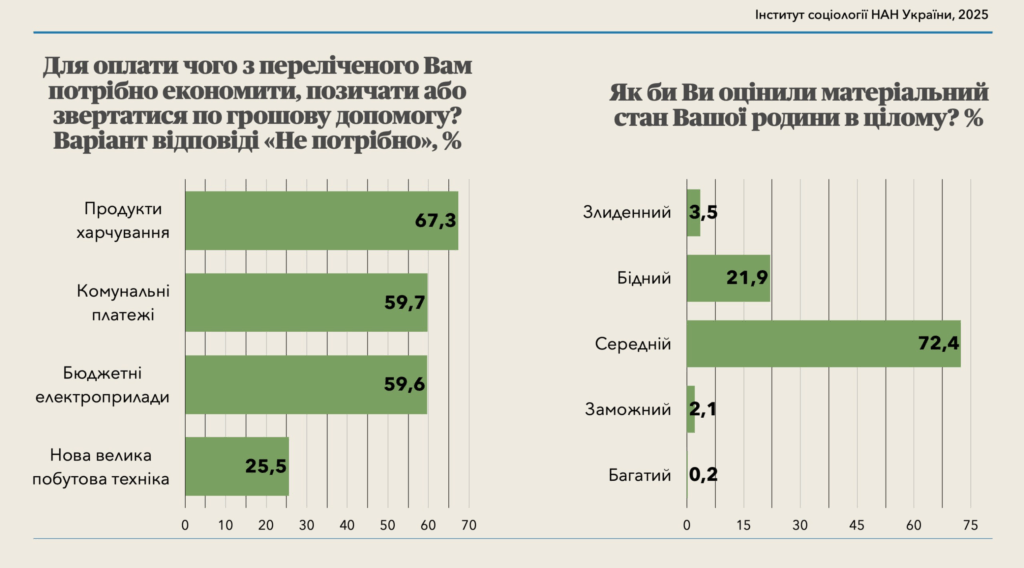The majority of Ukrainians survive, not live: sociologists have recorded a crisis of well-being
13 October 20:16 SURVEY
SURVEY
In 2025, most Ukrainian families will find themselves in a situation where even basic expenses, such as food and utility bills, require savings or outside financial support. This is evidenced by the results of a survey conducted by the Institute of Sociology of the National Academy of Sciences of Ukraine, "Komersant Ukrainian" reports.
According to the study, 67.3% of Ukrainians said that they have to save, borrow money or seek help to pay for food. This is the highest rate among all categories of expenses, which indicates a decrease in purchasing power even in basic needs.
Food is the first sign of a society’s economic condition. If the majority of people cannot afford to eat without restrictions, this is a signal of a serious decline in real incomes,” sociologists say.
Utility bills remain a critical expense item
Utilities are on the second place. Almost 60% of respondents (59.7%) admitted that they had to give up other purchases or look for additional sources of funding to pay for heat, gas, water or electricity.
Another 59.6% of respondents reported that they were forced to save even on budget appliances, such as kettles, irons, or microwaves. This means that even small household appliances are becoming a “luxury item” for a significant part of the population.
Ukrainians feel the least financial pressure when buying large appliances (refrigerators, washing machines, etc.), but even in this category, a third of the population (25.5%) recognizes difficulties in paying for such goods.
Read also: Ukraine is approaching the EU level: so far in terms of food prices
Most Ukrainians consider themselves to be “middle class”, but only nominally
Interestingly, despite the financial difficulties, 72.4% of respondents consider their family’s financial situation to be “average”. At the same time, more than a fifth (21.9%) call themselves “poor,” and 3.5% – “destitute.” Only 2.1% considered themselves “wealthy,” and only 0.2% of respondents called themselves “rich.”

According to analysts, such self-assessment indicates not so much a real sense of well-being as a decline in social standards: people compare themselves not to the pre-war standard of living, but to the current, lowered conditions of survival.
That is why the middle class is increasingly becoming a “paper” – a nominal indicator, not a real economic category
It should be noted that the survey was conducted by computer-assisted telephone interviews (CATI) using a random sample of mobile numbers. The field phase of the study lasted from September 9 to October 8, 2025. The survey involved 1,835 men and women from all regions of Ukraine, except for the Autonomous Republic of Crimea and the temporarily occupied territories of the South and East of Ukraine.
Decline in the well-being of Ukrainians: what will be the consequences for the whole country
An increase in the share of households that are forced to save even on food and utilities may have long-term negative consequences for the domestic market.
A decline in purchasing power leads to a drop in domestic demand, which in turn affects business activity, employment, and tax revenues.
If this trend continues in 2026, the government will have to strengthen social support programs and revise wage and tariff policies.
Watch us on YouTube: important topics – without censorship
It should be noted that as of 2025, the level of global poverty remains one of the main challenges of humanity. According to updated estimates by the World Bank, about 9.9% of the world’s population, or approximately 838 million people, live below the extreme poverty line. This figure means that people are forced to survive on less than US$2.15 per day, which is the international standard for defining extreme poverty.
Although this percentage is lower than two decades ago, the rate of poverty reduction has slowed. The situation has been affected by the effects of the COVID-19 pandemic, the war in Ukraine, the energy and food crises, and inflationary pressures that have sharply increased the cost of living in low- and middle-income countries.
If we look at the broader concept of poverty – living on less than $6.85 per day – then about 3.5 billion people, or about 44% of the world’s population, fall into this category. This means that almost half of humanity still has limited access to basic services such as education, healthcare, housing, and safe food.
The World Bank emphasizes that without systematic investments in development, energy and education, the achievement of the UN Sustainable Development Goals by 2030 – in particular, the eradication of extreme poverty – is at risk.
Read us on Telegram: important topics – without censorship









